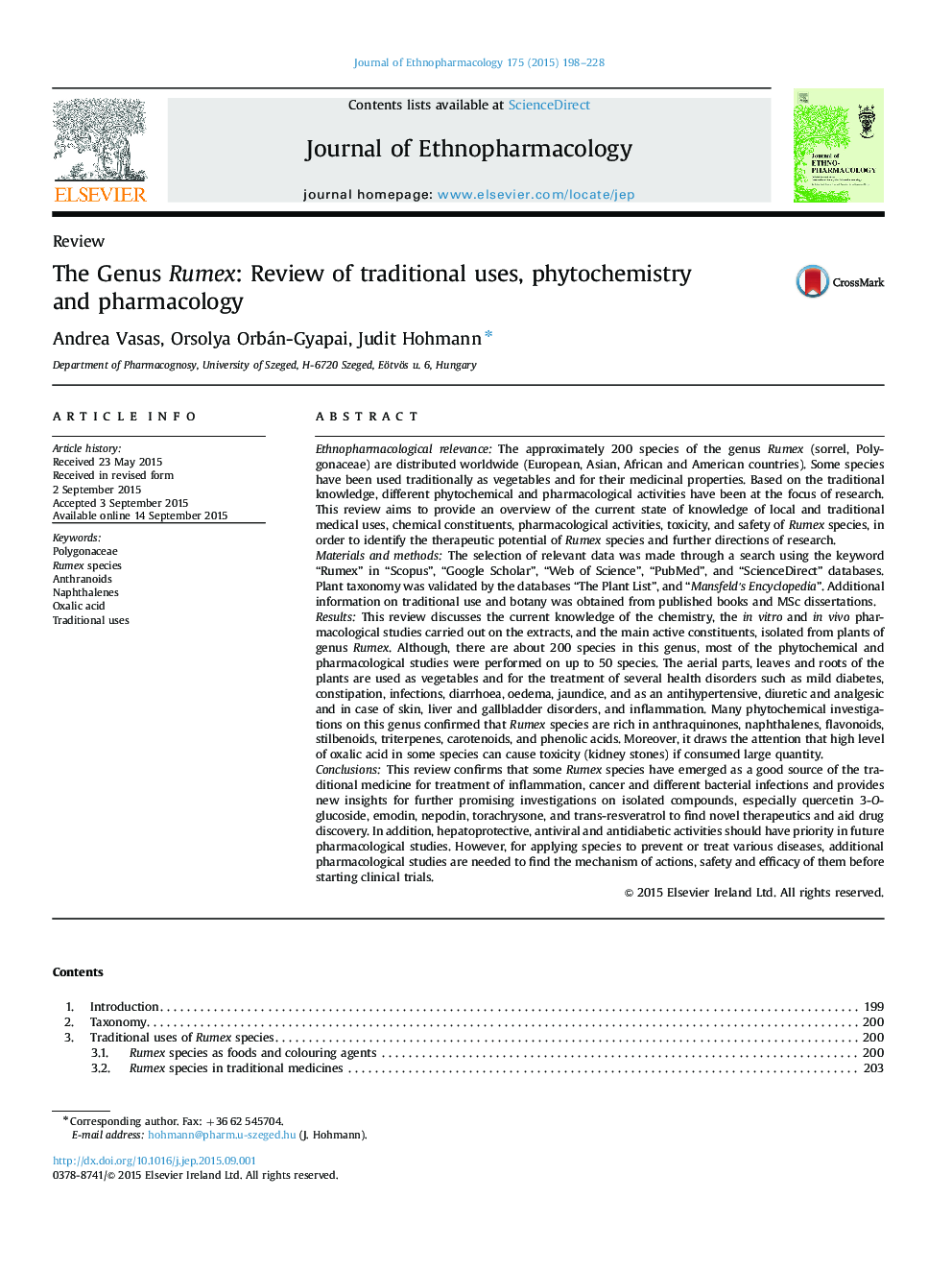| کد مقاله | کد نشریه | سال انتشار | مقاله انگلیسی | نسخه تمام متن |
|---|---|---|---|---|
| 2544893 | 1560387 | 2015 | 31 صفحه PDF | دانلود رایگان |

Ethnopharmacological relevanceThe approximately 200 species of the genus Rumex (sorrel, Polygonaceae) are distributed worldwide (European, Asian, African and American countries). Some species have been used traditionally as vegetables and for their medicinal properties. Based on the traditional knowledge, different phytochemical and pharmacological activities have been at the focus of research. This review aims to provide an overview of the current state of knowledge of local and traditional medical uses, chemical constituents, pharmacological activities, toxicity, and safety of Rumex species, in order to identify the therapeutic potential of Rumex species and further directions of research.Materials and methodsThe selection of relevant data was made through a search using the keyword “Rumex” in “Scopus”, “Google Scholar”, “Web of Science”, “PubMed”, and “ScienceDirect” databases. Plant taxonomy was validated by the databases “The Plant List”, and “Mansfeld's Encyclopedia”. Additional information on traditional use and botany was obtained from published books and MSc dissertations.ResultsThis review discusses the current knowledge of the chemistry, the in vitro and in vivo pharmacological studies carried out on the extracts, and the main active constituents, isolated from plants of genus Rumex. Although, there are about 200 species in this genus, most of the phytochemical and pharmacological studies were performed on up to 50 species. The aerial parts, leaves and roots of the plants are used as vegetables and for the treatment of several health disorders such as mild diabetes, constipation, infections, diarrhoea, oedema, jaundice, and as an antihypertensive, diuretic and analgesic and in case of skin, liver and gallbladder disorders, and inflammation. Many phytochemical investigations on this genus confirmed that Rumex species are rich in anthraquinones, naphthalenes, flavonoids, stilbenoids, triterpenes, carotenoids, and phenolic acids. Moreover, it draws the attention that high level of oxalic acid in some species can cause toxicity (kidney stones) if consumed large quantity.ConclusionsThis review confirms that some Rumex species have emerged as a good source of the traditional medicine for treatment of inflammation, cancer and different bacterial infections and provides new insights for further promising investigations on isolated compounds, especially quercetin 3-O-glucoside, emodin, nepodin, torachrysone, and trans-resveratrol to find novel therapeutics and aid drug discovery. In addition, hepatoprotective, antiviral and antidiabetic activities should have priority in future pharmacological studies. However, for applying species to prevent or treat various diseases, additional pharmacological studies are needed to find the mechanism of actions, safety and efficacy of them before starting clinical trials.
Figure optionsDownload high-quality image (296 K)Download as PowerPoint slide
Journal: Journal of Ethnopharmacology - Volume 175, 4 December 2015, Pages 198–228